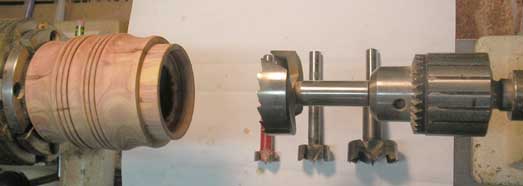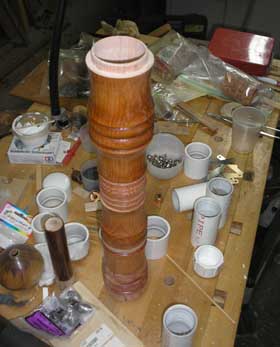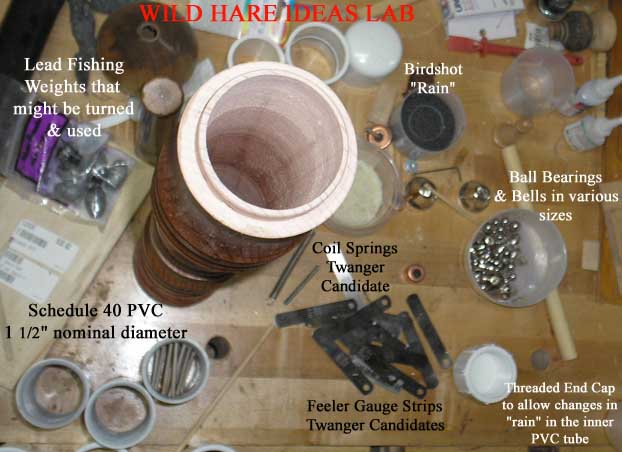Watch Out For The Blind Spots
One of the disadvantages to Wingin' It is that I seem to overlook easy solutions to turning "challenges". The outer tube components of this Rain Stick is basically just a LONG lidded box - with BOTH ends open. I use a skew to do lidded boxes - so - rather than use the MiniMonster Captured System I have, out of habit I reached for a skew for the hollowing of the first outer tube component. A forstner bit to start with, then a skew as a pointed scraper to do the hollowing. Not fast, but I can be pretty accurate with this method. It takes longer - and for this application - actually a waste of time since, unlike a lidded box, the inside won't be seen or noticed.
The obvious simple solution - drill out the inside - with a 2" forstner bit - which I didn't have on hand at the time. But after doing a "coupling" and a 7" long "tube" - I called a buddy who has a full set of forstner bits up to 2 1/4".

The 2" bit let me do in about half an hour what had taken me an hour amd a half or more to do using the Pilot Hole & Skew Hollowing Method. The Hard Way was interesting and challenging - but after that - it'd be a PITA (as well as the lower back since it requires leaning over to see where I'm hollowing.)
NOTE TO SELF
When faced with doing a LOT of something that'll never be seen and is basically tedious and boring
STOP - THINK
Is there an easier and quicker way to do this?
The time saved hollowing out the Outer Tube was better spent turning things - on the outside of the Outer Tube - stuff that WOULD be seen. But I didn't want to fill the outiside surface with a lot of detailed spindle work - tiny coves and beads and grooves and such. I wanted the wood and its grain to be seen and enough turning to give you multiple places to grip this thing when it's done. It is, afterall, going to be relatively large - and long - and have some heft to it. I DO NOT want anyone who plays with this Rain Stick - to DROP IT!

Now about that / those Inner Tube(s) where the sound will be created, I plan on at least two and both must allow for changing the "rain drops" - to birdshot, ball bearings of different sizes, corn, rice, beans, seeds . . . AND to change the sounds - from "rain" to perhaps bells or twangy jews harpesque sounds.
This Wild Hare Idea required some prototyping - before getting to the real turning. So hear's a peek into The Wild Hare Ideas Experiments Lab - with an assemblage of potential parts and materials for this piece. Hardware stores, craft stores and toy stores LOVE to see me coming since I buy all sorts of things that MIGHT be used for this piece - or some subsequent piece.

Like previous Wild Hare Idea pieces, this one has had plenty of opportunities to try things I have done before and plenty of potential options. Wonder what the end result will look like - and sound like.
BTW - I've also added - SMELL. One pair out Outer Tube components are either cedar, or juniper (they both look and smell pretty much the same. I've saved several large ZipLok bags of shavings - ladies love the smell of this stuff and usually want some for Potpoire (sp?). I've also noticed that I don't need to bath as often when working with this wood, even if the weather's quite warm. And bugs, including yellow jackets seem to avoid me like the plague - another side benefit of this project ; )